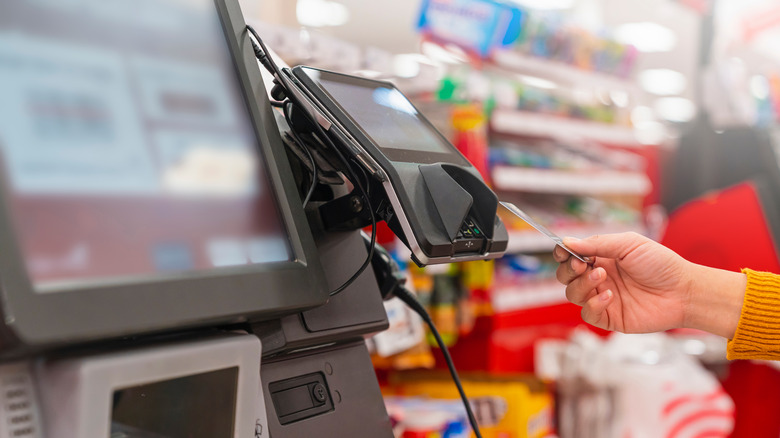New Data Shows People Are Cutting Back On Online Grocery Shopping
When the COVID-19 pandemic caused sudden shutdowns and closures across the U.S. in March 2020, it brought massive upheavals across the economy. One sector that actually profited from these changes was online grocery deliveries, per Forbes. Almost three years on from this skyrocketing success though, new data from Brick Meets Click shows this growth is starting to slow down.
According to Forbes, before March 2020, online grocery sales served as a paltry percentage of the overall grocery market. Folks seemed to prefer shopping in person, or were at least hesitant to try the fairly new services on a regular basis. The effects of the pandemic, then, pushed those consumers off the cliff and into the waters of online grocery sales. In-person shopping was now filled with threatening uncertainty, and so many consumers quickly adapted. Forbes adds that online grocery sales saw a 103% increase in 2020 from the previous year to total $73.7 billion in spending.
The persistence of the online shopping market also caused optimistic predictions, like this one reported by Supermarket News that 20% of all grocery sales would be online by 2026. Not everyone has jumped on board though. The delivery model doesn't suit some retailers like Trader Joe's, for example, and others might not have the same optimism in the market. According to the latest data, they might be right.
Market beginning to slow
Signs of a slow down in the online grocery shopping sector came as early as last June when a survey from Coresight showed that the number of families that shopped online in the last year was down by roughly 50% from the year before. Now, other data is showing a slow downward trend as increased prices make online shopping less attractive.
According to Grocery Dive, a report by Brick Meets Click showed that online grocery sales were down by 10% in November when compared to the same period last year. About 7% fewer of all households reported shopping for groceries online. Supermarket News reports similar drops from September and October as well. Those months saw a 2.5% and 3.7% decreases respectively from the year before.
Grocery Dive claims that this change is most likely due to customers trying to cut costs. There are ways to save when buying groceries online, but higher costs are changing where consumers shop. Instead of traditional grocery retailers, more customers are looking to mass merchant locations like Walmart for savings on their grocery bills. This data may reflect that these mass retailers will charge less for online orders than their grocery focused counterparts.

